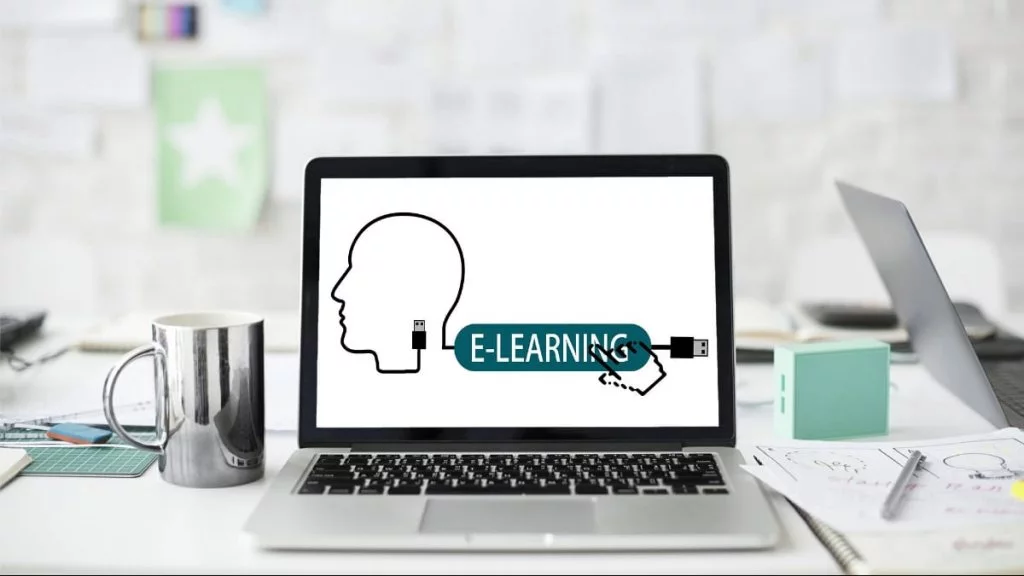
The term “e-learning” was first coined by Elliott Masie in 1999. He defined the “e” in e-learning as the experience dimension of learning that includes engagement, curiosity, simulation, and practice.
Ever since the emergence of the term, e-learning has had several definitions. Sangrà et al., in their publication, grouped e-learning into four categories: distance education, technology-driven, delivery-system-oriented, communication-oriented, and educational-paradigm-oriented.
History and definition of the e-Learning
Marc Rosenberg defined e-learning as the use of internet technologies to deliver a broad array of solutions that enhance knowledge and performance. Rodrigues et al. define e-learning as an innovative web-based system based on digital technologies and other forms of educational materials whose primary goal is to provide students with a personalized, learner-centered, open, enjoyable, and interactive learning environment supporting and enhancing the learning processes.
All these definitions provide various perspectives on e-learning. Alternatively, we can summarize e-learning as integrating computer software, hardware, and educational theory and practice to enhance learning.
History
The concept of distant learning or e-learning has existed long before the popularity of computers. In 1924, Ohio State University professor Sidney Pressey created the Automatic Teacher’s first electronic learning machine. Someone displayed typewritten, multiple-choice questions in a small window. The students could input the corresponding answer, and after that, the next question will display. The device then counted the number of correct responses and presented the total score after finishing the test.
Although the Automatic Teacher was unsuccessful, it paved a path toward the adoption of electronic learning. Currently, called «e-Learning». They didn’t develop online learning technology until the 1960s. The system, PLATO, developed by Donald L. Bitzer, was initially conceived for use at the University of Illinois. It delivered coursework through a network of interconnected graphics terminals. Later, local schools, prisons, and other universities adopted PLATO. The system’s success resulted in it getting up to four generations.
ARPANET
DARPA introduced the Advanced Research Project Agency Network, ARPANET, in 1969, and it paved the way for the modern Internet. The network was used to share educational content among scientists in universities across the US. As the network expanded beyond its initial educational use, it led to linking commercial networks and enterprises, hence its transition into the Internet. The Internet provided a new way of sharing content across the globe. When Apple released the first MAC in 1977, users could now have access to personal computers in their homes.
The sharing of educational content became more prevalent with the wide adoption of personal computers. However, it was only until 1994 that the first accredited online school, CompuHigh, was established, serving grades 9 through 12. The first online university, Jones International University, later opened in 1999, offering online courses and diplomas in business and education. It was also during this year that educational technology expert Elliott Masie coined the term e-learning.
The use of online learning platforms soon found benefits beyond exclusively educational purposes. Businesses also began using e-learning methods to train their employees, and a new e-learning market began to grow worldwide. They believe that in the future, e-learning processes will help them save a lot of money they usually spend on offline learning.
Modern e-Learning

E-learning became widespread throughout the globe with the adoption of Massive Open Online Course (MOOC) in 2012, and many universities began offering fully online learning programs. Online learning platforms such as MyOwnConference, Coursera, Udacity, and edX emerged and were soon used across the globe.
The rapid growth of online learning can be attributed to the advancement of technology, making information more accessible. Learners can access content from the Internet irrespective of their location and as many times as they want. The ease of access to content in e-learning platforms makes it somewhat preferable to classroom teaching. These platforms also facilitate access to updated content from renowned institutions, breaking cost and distance limitations learners could face if they chose to pursue in-person learning.
Although most e-learning systems are generally asynchronous (allowing access to content whenever students wish), synchronous technologies are also used for e-learning. These systems include live video lessons, audio, and shared access to electronic content at scheduled times. The use of synchronous technologies establishes the needed interactivity of learning in an online environment. Students can collaborate on shared files, interact with their teachers during these live sessions, and work with their peers, thus simulating a physical learning experience.
The future of e-Learning
The COVID-19 outbreak in 2020 led to more widespread adoption of online technologies for learning. While most of the world was in lockdown, most industries sought solutions to continue providing their services to their clients. One such industry was entertainment, which heavily relies on physical and social interaction between people. For example, escape rooms, a recent trending form of entertainment, began embracing virtual alternatives to their physical activities. Although e-learning was already common worldwide, not every institution offered online education. The pandemic obliged most institutions to look towards distant learning solutions to continue educating their students.
The large-scale integration of online learning by institutions has led to a rise in the industry. Since for-profit institutions offer many distance learning programs, the concept has become closely related to the commercialization of higher education. According to Statista, the market of e-learning all over the world will be over 243 billion dollars in 2022. Investment into this industry will lead to further research into better technology that could enhance the learning experience for students and teachers. The use of adaptive learning, artificial intelligence, augmented and virtual reality, and learning management systems are examples of future trends which will prevail in e-learning.
Other future ways of e-Learning
E-learning also blurs out the line between corporate training and higher education. The development of corporate-college partnerships around online learning offerings opens up new possibilities as students benefit from choosing from among the best programs worldwide, with no limitations on their geographical location.
The pandemic also revealed the limitations of the current education systems, which were slow to adapt to digitalization. Lockdowns forced institutions without blended learning (a mix of in-person and online classes) to shut down. This failure happened because educators underestimated blended learning and didn’t include it in their digital education shift.
Although, the current global situation might be uncertain, but it’s driving many institutions to embrace e-learning and integrating e-learning alternative to the traditional face-to-face methods across institutions worldwide. Naturally, like any method, online e-learning has its own pros and cons. Carefully review these in light of your specific business needs.
Read next: Useful Tools for Distance Learning

Charlotte Lin is a content creator at escaperoom.com. She’s a passionate young woman, mother to an amazing nine-year-old, and an avid reader. Over the years, writing has helped her explore and understand the world as well as her own self. She loves to travel, meet new people, and spend quality time with her daughter.











